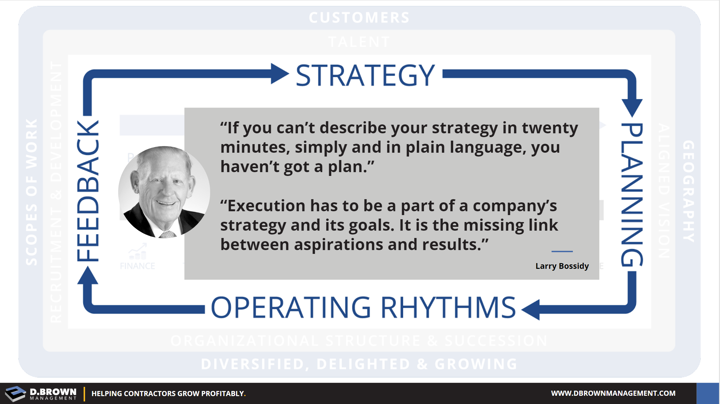Execution is the discipline of getting things done. A simple way to look at your organizational structure is in three major layers:
- Ownership & Senior Executive Leadership: Defining what you want the business to look like over 10+ years and how the business will be setup for the next generation of leadership.
- Business Operating Layer: This is the layer that ensures execution of the long-term strategy and delivers the financial returns required by the owners.
- Project Execution Layer: This is where the rubber meets the road and value is added to your customers. This layer makes up the majority of the talent, time and other resources in any contracting business. This includes all project related people and support. This is the foundation and any weaknesses here will show up everywhere.
How many of the problems you are having at the Project Execution Layer are due to weaknesses in the Business Operating Layer?

